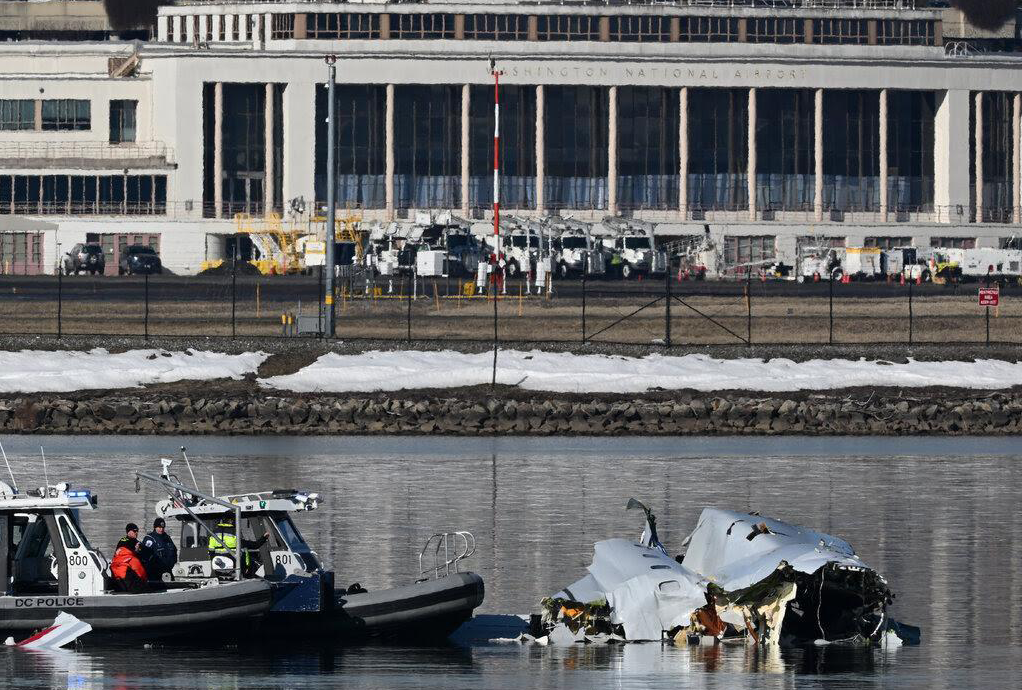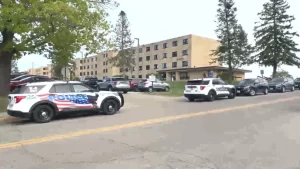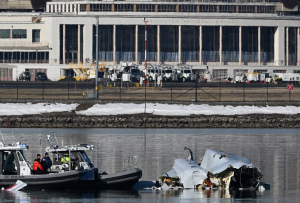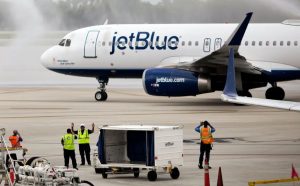A midair collision near Washington has sent shockwaves through aviation circles and the general public, reigniting concerns about air safety, air traffic control, and the risks associated with congested airspace. The incident, involving two aircraft in close proximity to a major airport, has sparked investigations and discussions about how such tragedies can be prevented in the future.
What Happened?
According to initial reports, the accident occurred when two aircraft—possibly a private jet and a smaller general aviation plane—collided midair, resulting in debris falling into a nearby river. Emergency response teams, including the DC police, Coast Guard, and National Transportation Safety Board (NTSB), were quick to arrive at the scene to assess the damage and search for survivors.
Eyewitnesses reported hearing a loud explosion in the sky before spotting the wreckage plummeting into the water near Washington National Airport. The proximity of the accident to a busy urban area added to the urgency of rescue efforts. Although the exact number of casualties remains unclear, preliminary reports suggest that multiple people were onboard the aircraft involved.
Potential Causes of the Collision
Midair collisions, though rare, often stem from a combination of factors. Investigators will be looking at several possible causes, including:
1. Air Traffic Control Miscommunication
Washington’s airspace is among the busiest in the United States, requiring precise coordination between air traffic controllers and pilots. Any miscommunication regarding altitude, flight paths, or traffic advisories can lead to catastrophic consequences.
2. Pilot Error
In many midair collisions, pilot error plays a significant role. Factors such as misjudging distances, failing to maintain assigned altitude, or deviating from a designated flight path can contribute to a crash. Investigators will examine flight logs and cockpit recordings to determine if any errors were made.
3. Mechanical Failure
While less common, mechanical malfunctions in navigation or communication systems can prevent pilots from detecting and avoiding nearby aircraft. A detailed examination of wreckage from both planes will help determine if technical issues played a role.
4. Weather Conditions
Poor visibility due to fog, snow, or heavy rain can make it difficult for pilots to see other aircraft in time to take evasive action. However, early reports suggest that weather conditions at the time of the collision were relatively clear, making this a less likely factor.
5. Flight Congestion and Proximity to Airports
With Reagan National Airport nearby, flight congestion in the area is a constant concern. If multiple aircraft were attempting to land or take off simultaneously, the risk of collision would be significantly higher. Investigators will analyze radar data to reconstruct the sequence of events.
Emergency Response and Investigation
Following the crash, emergency responders acted swiftly, dispatching helicopters, boats, and divers to search for survivors. The National Transportation Safety Board (NTSB) has launched an in-depth investigation to determine the root cause of the accident.
Key aspects of the investigation will include:
- Retrieving and analyzing flight data recorders (if available)
- Interviewing air traffic controllers and witnesses
- Reviewing radar tracking data
- Inspecting debris for mechanical failures
- Assessing whether safety regulations were followed
Once the investigation is complete, the NTSB will issue a report with findings and recommendations aimed at preventing similar accidents in the future.
Lessons in Aviation Safety
This incident underscores the importance of maintaining strict safety protocols in aviation. Several measures can help reduce the likelihood of midair collisions, including:
1. Enhanced Air Traffic Control Systems
Upgraded radar technology and artificial intelligence-driven traffic management systems can provide better monitoring and early warning alerts for potential collisions.
2. Pilot Training and Awareness
Regular training on collision avoidance techniques, communication protocols, and adherence to flight paths is crucial for preventing midair crashes.
3. Mandatory Collision Avoidance Technology
Many modern aircraft are equipped with Traffic Collision Avoidance Systems (TCAS), which warn pilots of approaching aircraft. Expanding this technology to all general aviation aircraft could be a game-changer in safety.
4. Stricter Regulations in High-Traffic Areas
Airspace near major airports needs more stringent regulation to control flight patterns and minimize the risk of unexpected crossings. Creating designated flight corridors for different types of aircraft can improve safety.
Impact on Aviation Policies
This tragedy will likely prompt a reevaluation of air traffic management in the Washington, D.C., area and other congested airspaces. Lawmakers and aviation regulators may push for new safety measures, enhanced air traffic monitoring, and stricter enforcement of existing rules.
Final Thoughts
The midair collision near Washington serves as a stark reminder of the ever-present risks in aviation. While flying remains one of the safest modes of transportation, accidents like these highlight the need for continuous improvements in technology, training, and regulations.
As investigations continue, the aviation community and policymakers must work together to implement measures that enhance air safety and prevent future tragedies.































